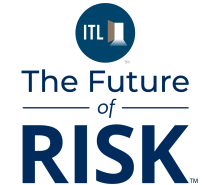My first book, "Big Blues: The Unmaking of IBM," published in 1993, was an archetype. Despite the years of reporting and the blood, sweat and tears that went into it, the book boiled down to a familiar story: A self-satisfied giant failed to see that its world was changing and lost to a nimbler upstart.
That upstart, Bill Gates, recently published the first volume of his autobiography, "Source Code: My Beginnings," which reminded me of a moment in my book where everything hung in the balance for Microsoft. Gates, just 24 years old at the time, made a shrewd contract demand whose significance the IBMers missed — and without which the world at large might never have heard of Gates or Microsoft.
How could someone that young be so sophisticated? Because he had already negotiated dozens of contracts with big corporations (he started doing professional programming work in eighth grade) and had been living in the nascent PC world for years. His IBM counterparts, raised on mainframes, had had only a few months to get acquainted with the PC business — and, as they would soon learn, its economics bore little resemblance to mainframes.
There is a lesson there, I think, for the insurance industry. The PC revolution, along with more recent seismic technology shifts, shows that an advance as fundamental as gen AI can change the source of revenue and profits. Yet insurance companies are largely focused on gen AI's low-hanging fruit, such as efficiencies.
That work is important, but companies should be thinking much, much bigger if they want to be the winner in the latest tale and not a self-satisfied giant left by the wayside. Insurance companies should already be envisioning where the new revenue and profit pools might be, should be testing to see if those visions might be right and should be experimenting with how to get to those pools first.
I'll offer some thoughts on where at least one major pool could be for insurers, as well as on how to test and experiment. But let's start with the meeting that a young Bill Gates had with a roomful of IBMers in a makeshift office in Boca Raton, Florida, in late September 1980.
Gates and his chief lieutenant, Steve Ballmer, had flown overnight from Seattle to Miami. They changed into their suits in a men's room... and Gates, who hadn't slept in 36 hours, realized he had forgotten to bring a tie. They rented a car and drove to Boca, where they sat outside a department store until it opened at 10am so Gates could buy one. They arrived late for their meeting with the buttoned-down IBM team. Not a great start.
IBM had set up a skunkworks in a leaky old warehouse in Boca to try to develop a PC outside of normal channels, which had been fatally slow in three attempts to produce a PC. By the time an IBM product was ready to launch, the quicksilver market had already moved on to better technology. Apple had launched its Apple II all the way back in 1977 and was getting buzz that embarrassed IBM more and more by the day, as it failed to respond. Frank Cary, IBM's fierce CEO, walked around demanding of his executives, "Where's my Apple?"
IBM had done its due diligence and settled on Microsoft as the right supplier of a PC operating system, but there were plenty of doubters, and no one wanted to risk Cary's wrath if this latest attempt failed, too. Microsoft had all of 32 employees at the time, and its CEO and public face, Gates, could have passed for 15 or 16 years old. So IBMers packed the room and pelted Gates with questions.
He's in his element in any technical discussion and quickly won the room over. But that still left the contract.
Jack Sams, the IBM executive who had found Microsoft, told me he had counseled Gates to be bold. Sams reasoned that Microsoft was a key supplier, so IBM needed it to be healthy for years. He told Gates he could even ask for $1 million (about $4 million in today's dollars) in return for an exclusive license of the DOS operating system.
But Gates had a better idea. He just asked for a tiny royalty per computer sold, while retaining the right to license DOS to other companies. IBM accepted the offer, and Microsoft today has a market cap of $3 trillion.
Why IBM missed the boat is a complicated story: I wrote some 130,000 words on the subject in "Big Blues." Here, I'll focus on why Gates got things right.
In fact, he didn't get everything right. Far from it. He told me he didn't think IBM would sell that many PCs. The product just didn't impress him. He also didn't fully understand how much an IBM PC would set the standard for the whole industry, creating the wildly lucrative opportunity for him to license his operating system to companies making "IBM-compatible" PCs. In fact, he thought Microsoft's big money maker would continue to be programming languages: Microsoft software that let programmers use common languages such as BASIC, Fortran and Cobol as they coded on PCs.
But Gates got more important issues right because he and his Microsoft co-founder, Paul Allen, had been on the cutting edge of the PC revolution before PCs even existed — Allen had been tracking developments in microprocessor technology since the early 1970s, waiting for one they thought could be the heart of a desktop computer. When they saw their opportunity, they founded Microsoft in 1975, five full years before IBM came knocking. In those intervening years, they had piled up plenty of small successes and some failures that educated them about the new world of PCs.
In particular, they had what was initially a great experience but then became a horror story with a startup, MITS, that was the early leader in PCs. Microsoft's languages became standard on MITS computers and rode the MITS wave in the second half of the 1970s, but the companies came to blows over contract language about what exclusive rights MITS held and thus about Microsoft's ability to sell its languages to MITS competitors. Microsoft eventually won in arbitration, and MITS had to pay about $100,000 in royalties that it had withheld, but cash at Microsoft got so tight for a bit that Gates borrowed from an employee to meet payroll. So he was in no hurry to grant anyone else anything that smelled of exclusive rights, even if it meant getting the imprimatur of IBM.
Gates had also seen — actually lived, for years — the Moore's Law doubling of computing power on a chip every year and a half, so he saw the coming, monumental shift toward increasingly powerful, relatively inexpensive PCs in a way that those who had long lived in the mainframe world could not.
To me, the origin story of Microsoft shows the value of being early on a fundamental shift in technology — not entering the battlefield in some grand way that assumes you have all the answers in a still-forming market but in a way that lets you have the sorts of small successes and failures that educated Gates and let him outmaneuver IBM.
My longtime colleague and frequent co-author Chunka Mui took that idea of early immersion a step further last week, based on what he saw in the initial internet boom, when his book, "Unleashing the Killer App," was pretty much the bible for innovation and based on what he's learned since through consulting, speaking and research.
Of the five lessons he offers for innovating with generative AI, I'll underscore two. He writes:
"It's Not Enough to Adopt the Technology; You Need to Find the Value. Satya Nadella, the CEO of Microsoft, recently observed that while Microsoft survived the transition to the Internet and the Web quite well, it missed out on the biggest business model shift in value. Instead, Microsoft and others let Google—a company that barely participated in the original Dot Com bubble or bust—capture the lion’s share of the trillions in high-margin revenues stemming from search-based advertising since then. Prior technology leaders, like Kodak, Sears, Best Buy, Blockbuster, and Yahoo, were even less fortunate. Likewise, AI will likely shift the value proposition and profit distribution in a wide range of industries. Recognize that adopting AI is only half the battle; understanding the business model implications is what will separate the winners from the also-rans."
And:
"Think Big, Very, Very Big. We are entering a golden age for entrepreneurs and innovators to reset business plans and goals to build a better tomorrow—and prosper enormously by doing so. Right now, the opportunities are better than ever for people and companies seeking to tackle the biggest problems facing our world: sustainable energy, carbon capture, housing, hunger, food production, transportation, water quality, and more. Companies that help solve these grave problems are increasingly valued by investors, especially as the costs of key technologies are plummeting to nearly nothing while their capabilities grow exponentially. Focus on long-term value rather than short-term gains. As Astro Teller, Captain of Moonshots at Alphabet’s X, points out, 'Making a [huge] problem go away is unlocking enormous value in the world. Have faith. If you solve that problem, the money will find your organization.'”
How gen AI may transform the insurance model isn't at all clear to me. If it were, I'd quit my day job and go become a multibillionaire.
But I do think there's one obvious area for exploration: the use of insurance data and expertise to predict and prevent losses, as opposed to merely compensating policyholders once they happen. Gen AI allows for the gathering and analyzing of vast amounts of data that weren't previously possible. And everything can happen almost instantaneously. Gen AI no longer just has a brain, either, as AI always has; gen AI has a voice. So it can not only gather and analyze vast troves of information in real time but can tell us what risks it sees, heading off water leaks, the spread of wildfires, auto accidents, you name it.
At the moment, insurance companies generally monetize their data and expertise through products, but it seems to me that there could be a massive new pool of service revenue for those that get in the game early and figure out how to define it and tap it. Yes, that requires a new business model, but think back on Gates and IBM: There was no such thing as a PC software industry until Microsoft pretty much invented it.
Cheers,
Paul


